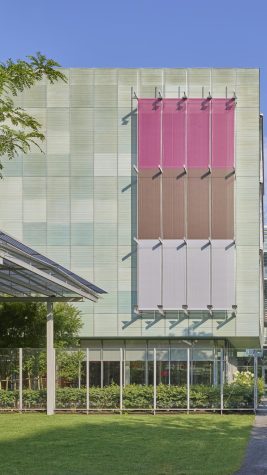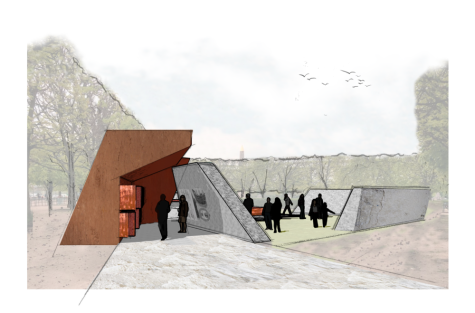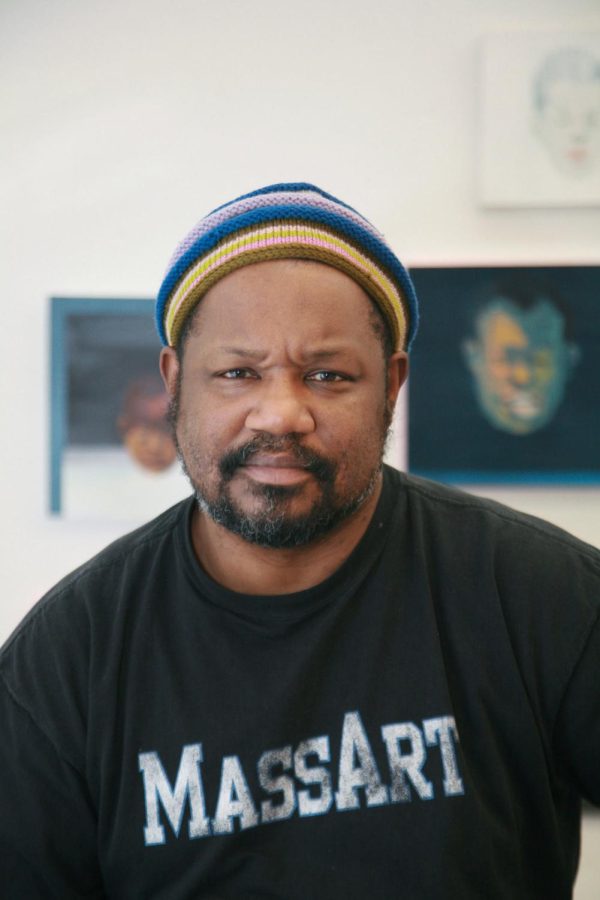Steve Locke on Monuments
“People have lost the ability to think.”
After years of debate, on June 3, 2020, the John C. Calhoun statue was removed from its 115-foot perch above Marion Square in Charleston. Like the removal of historical monuments across the country, its removal continues to reframe the way in which we interact with all monuments, markers, and memorials. With this conversation at the forefront, the New York-based, Guggenheim Fellowship recipient, and former artist-in-residence to the city of Boston, Steve Locke, was recently invited as the Gibbes Art Museum’s 2021 Distinguished Lecture Speaker.
Originally from Cleveland, Ohio and raised in Detroit, Michigan, Locke is a renown American artist, with a specialization in male portraiture and the understanding of masculinity and its figuration. He received his M.F.A. in 2001 from Massachusetts College of Art and Design. In 2020, he was awarded the prestigious Fellowship from the John Simon Guggenheim Memorial Foundation, and is currently a tenured professor of fine arts at the Pratt Institute in Brooklyn, New York.
His work has contributed to the ways in which we, as a society, often think about the function and figural content of a monument or memorial. In 2018 he proposed a memorial on the site of one of Boston’s most famous landmarks, Faneuil Hall, erected in 1743 by its namesake Peter Faneuil, a wealthy merchant who made his fortune from the slave trade. Entitled Auction Block Memorial at Faneuil Hall, the 10 ft-by-16 ft bronze platform was to be heated year round to 98.6 degrees Fahrenheit, or the temperature of the human body and dedicated to those enslaved Africans and African-Americans trafficked along the triangular trade. Locke stated the measurements of the block are “taken from analysis of slaving manifests that dictate the amount of space available for “loose-pack” cargo of slaves. Humans were allotted a space of 3×5 feet. The block will be cast in sections this size to reflect this organizational structure. It will metaphorically bring the elements of transport to the site. Also, the historic images of “slave packing” will be included on the smaller section of the block.”
“Because the work is at grade, it risks being ignored, stepped on, driven over and all of those things are metaphors for how we move through the spaces of Faneuil Hall and Merchants Row now. There should be no impediments, borders, stanchions, or blockades. People should be free to walk on the bronze plate or not. They can engage with our history or not. That is the choice that many of us make daily. Being at grade makes it accessible to all visitors regardless of mobility. The heated surface and the raised text and images make it accessible to the visually impaired as well.”
However, after raising a significant amount of funding for the project, it would cost roughly $300,000 to install, Locke decided to withdraw his plans. He received an email from NAACP Boston branch president, Tanisha M. Sullivan, and she wrote, “I want to be clear that the work we do every day through the NAACP Boston Branch is centered on uplifting and advancing communities of color, with a focus on the Black community in the City of Boston.” She continued, “It is for that reason that we object to the installation of a slave auction block memorial in front of Faneuil Hall and have made those objections known.”
Locke said that he believes the NAACP’s opposition owes at least in part to one of its staffer’s being involved in New Democracy Coalition, a nonprofit that has opposed the memorial and called for Faneuil Hall to be renamed, according to an article published by Art News.
Working with city officials and art institutions to implement his compelling ideas, he has firsthand experience with how disputes over monuments can be exploited and politicized to the detriment of the community at large. While his proposal was turned down, he also demonstrates how essential it is that artists show us the way forward (Gibbes).

Solo exhibitions include the Institute of Contemporary Art, Boston, the Museum of Contemporary Art, Detroit, and the Isabella Stewart Gardner Museum among others. At the Gardner, he created a public site for mourning and healing entitled Three Deliberate Grays for Freddie (A Memorial for Freddie Gray).
On April 12th, 2015, Freddie Carlos Gray, Jr., a 25-year-old Black American man, was arrested by the Baltimore Police possessing what the police alleged was an illegal switchblade under Baltimore law. While being transported in a police van, Mr. Gray fell into a coma and was taken to a trauma center. He died on April 19, 2015; his death was ascribed to injuries to his spinal cord.
Locke chose three photos of Gray, a family photo, a still of his arrest, and one of him in the hospital on life support. Using digital tools, Locke created monochromes by averaging the color in the pixels of each of the images. The resulting colors are a monochrome translation of the life, suffering, and death of Mr. Gray and form a timeline (street corner, arrest, hospital) of the events. He has used these colors to the create paints that appear on the front of the Gardner museum, which faces the historically black neighborhood across the street.
According to Locke, in the language of painting, “gray” is used to name any color that is the result of mixing primary colors. In this sense, the painter’s idea of gray is chromatic and not simply a mixture of black and white.
Most recently, Steve Locke has submitted a design for a memorial tribute to the victims of slavery at the Tuileries Garden in Paris. In June of 2020, he learned there was an open call from the government of France for submissions to design a Memorial for Enslaved People. After the circumstances in Boston, Locke was initially hesitant to design another memorial with this concept. However, as a descendant of enslaved people himself, he came up with a potential design.
“My proposed work literalizes the forced journey from person to object to citizen that is the hallmark of the slave trade. It makes the history and horrors of enslavement visible and tangible. It places the events and actors involved in the trade in the context of political and economic circumstances.

It honors and affirms the lives, labor, and contributions of those lost and stolen, and provides the nation with a site of reflection and remembrance imbued with their presence.”
I attended his lecture in Charleston with the Gibbes Museum last Wednesday. Not only was it impactful to listen to a person that is so intelligent and thoughtful, but I listened to a creative speak about his work and the emotion he hopes it evokes upon his audience. As he states, the purpose of art is for people to view it and feel more alive and changed after that experience. From only an hour of hearing him speak, he very much embodies that philosophy. If anyone reading this is ever given the opportunity to hear him or visit his work, I would highly recommend it.
Sources:
https://www.artnews.com/art-news/news/steve-locke-withdraw-project-12993/








